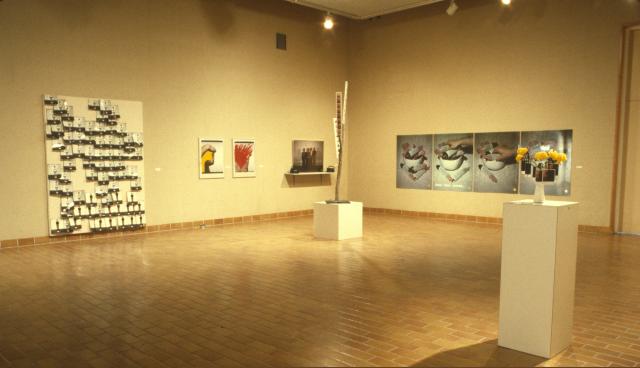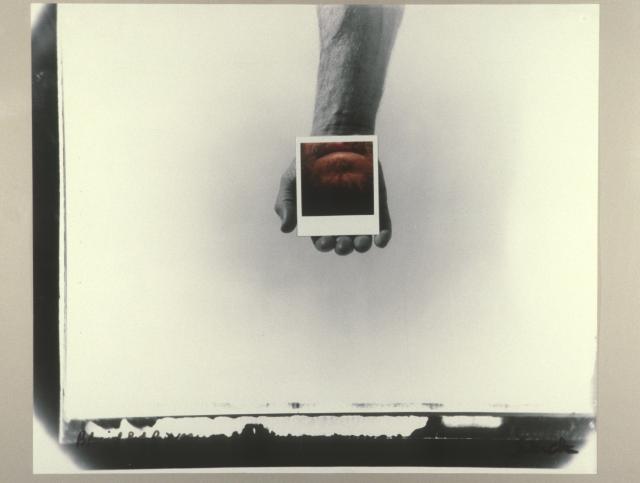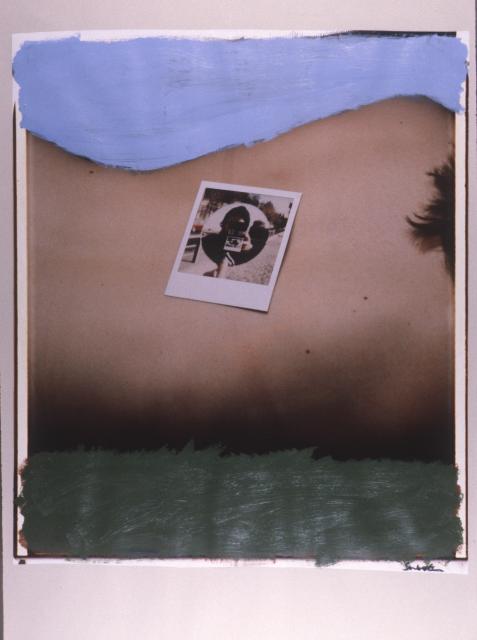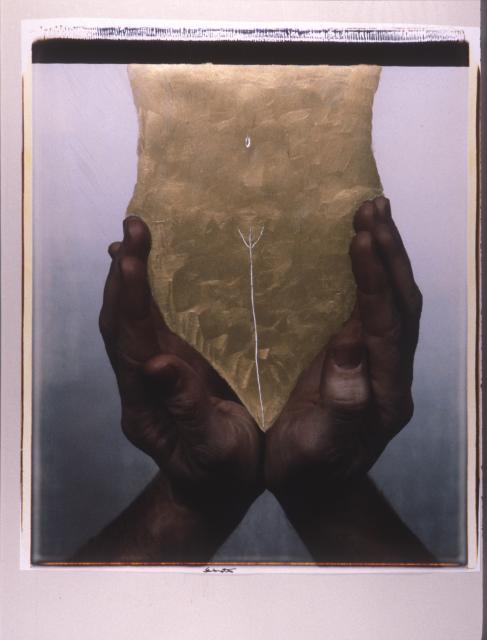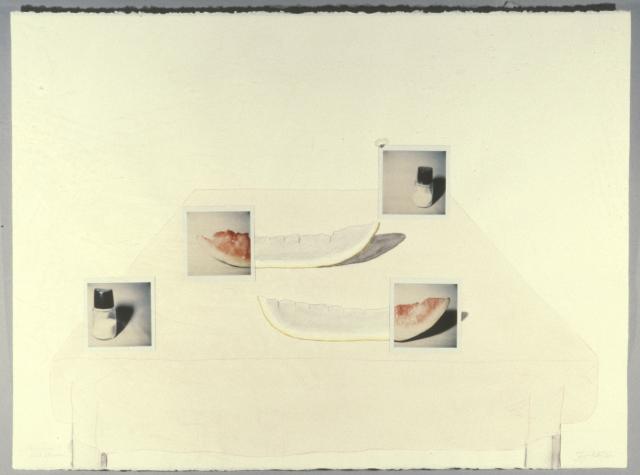
Exhibition
12 Mar 1981 - 9 Apr 1981
OPENING RECEPTION
Thursday March 12, 1981
8 – 10 PM
Instantaneous Response
The assembly of exhibition, Instantaneous Response: Polaroid Photo Art by Iain Baxter, represented a unique situation for the Alberta College of Art Gallery. Iain Baxter, who was residing at that time in Europe, created the majority of the pieces using the Gallery workshop as a studio space for a period of three weeks before the exhibition. Thus the title, Instantaneous Response, ironically evolved into an unintentional allusion to the brief time-frame applied to the production of many of the works. However, the title was intentioned to refer to the instant quality of the image produced by the Polaroid camera.
Baxter, who has stated "I probably use a camera more than a pencil" , has most recently had access to the Polaroid Europa B.V., large format Polaroid camera in Amsterdam. The resulting 50 x 60 cm images formed the basis of the work created specifically for the exhibition. In addition, new pieces involving large black and white photographs collaged with standard size color SX-70 Polaroids, and 3-dimensional works using "real" objects and Polaroid images of objects were completed in Calgary.
Continuity for Baxter's current vocabulary of artistic investigations was provided through the inclusion of earlier works using the Polaroid image, and/or works which juxtaposed real objects and painting and drawing, and photographs using real objects as visual puns. Two of these, dating to 1970, Idea of a Photograph and Trans V.S.I. (Visual Sensitivity Information), utilized standard format, black and white Polaroids. Peter Piper Picked, 1976, a series of three large format, cibacrome photographs exemplified an early use of food stuffs as subject matter with obvious sexual references (cucumbers wearing "french ticklers" as pickled peppers); a subject continued in recent works such as Animal, Vegetable, Mineral Tree, 1981.
Example's of Baxter's visual "language research" projects were also incorporated into this exhibition. From the series exhibited in 1978 at the Vancouver Art Gallery, Good Black Kettles, Good Black Kettles with Wood and White Light Landscape with Diamond use the photographed portraits of persons selected from the phone book with surnames of Good, Kettles, White etc. as signifiers of the objects their names literally described. These verbal and visual puns continue in such recent works as Prairie Landscape - March 12, 1981 or Handwork - Abstract Plank Held.
In the most successful pieces created for Instantaneous Response the artist has exploited two of the most attractive characteristics of Polaroid photography, the heightened sensuality of its color and texture, and the sense of immediacy both bring to an image.
In the interview which follows with free-lance Curator Bruce Ferguson, Baxter, always the free-wheeling experimentalist, details his history of involvement with the photograph and within that the Polaroid image, and his general vision of an approach to artmaking. In INSTANT BAXTER SANDWICH, Iain repeatedly stresses the multiple layers of perception and meaning in his own world and work. The continuity apparent within the exhibition was this juxtaposition of many levels of reality and illusion combined with an overall whimsy, humour and childlike wonder in examining the components of our visual environment.
As Curator of this exhibition I would like to thank the artist, and the Gallery staff, Charlie Fox and Brad Struble, and Bruce Ferguson for their contributions toward this project.
In addition, the ACA Gallery is grateful for the special project assistance of The Canada Council and the support of the Alberta College of Art administration, staff and students for this exhibition.
Val Greenfield
Curator
This represents Iain Baxter's first solo exhibition in Calgary, the city where he lived for twenty of his formative years. During the late 1960’s and early 1970's, Iain Baxter's reputation as a leading contemporary artist became established both in Canada and internationally. With his wife Ingrid, he formed N.E. Thing Co. in 1965 in Vancouver, and under this name exhibited extensively across this country, the United States and Europe. Now 44 years of age, he has most recently participated in solo exhibitions at the Canadian Cultural Centre in Paris, France and the Gemeentemuseum in The Hague, Holland. In the summer of 1980, he was invited to participate in Pluralities, organized by the National Gallery of Canada to celebrate their 100th anniversary and in addition, his work is currently touring European museums in the exhibition, 10 Canadians organized by the Art Gallery of Ontario.
Curated by Valerie Greenfield
